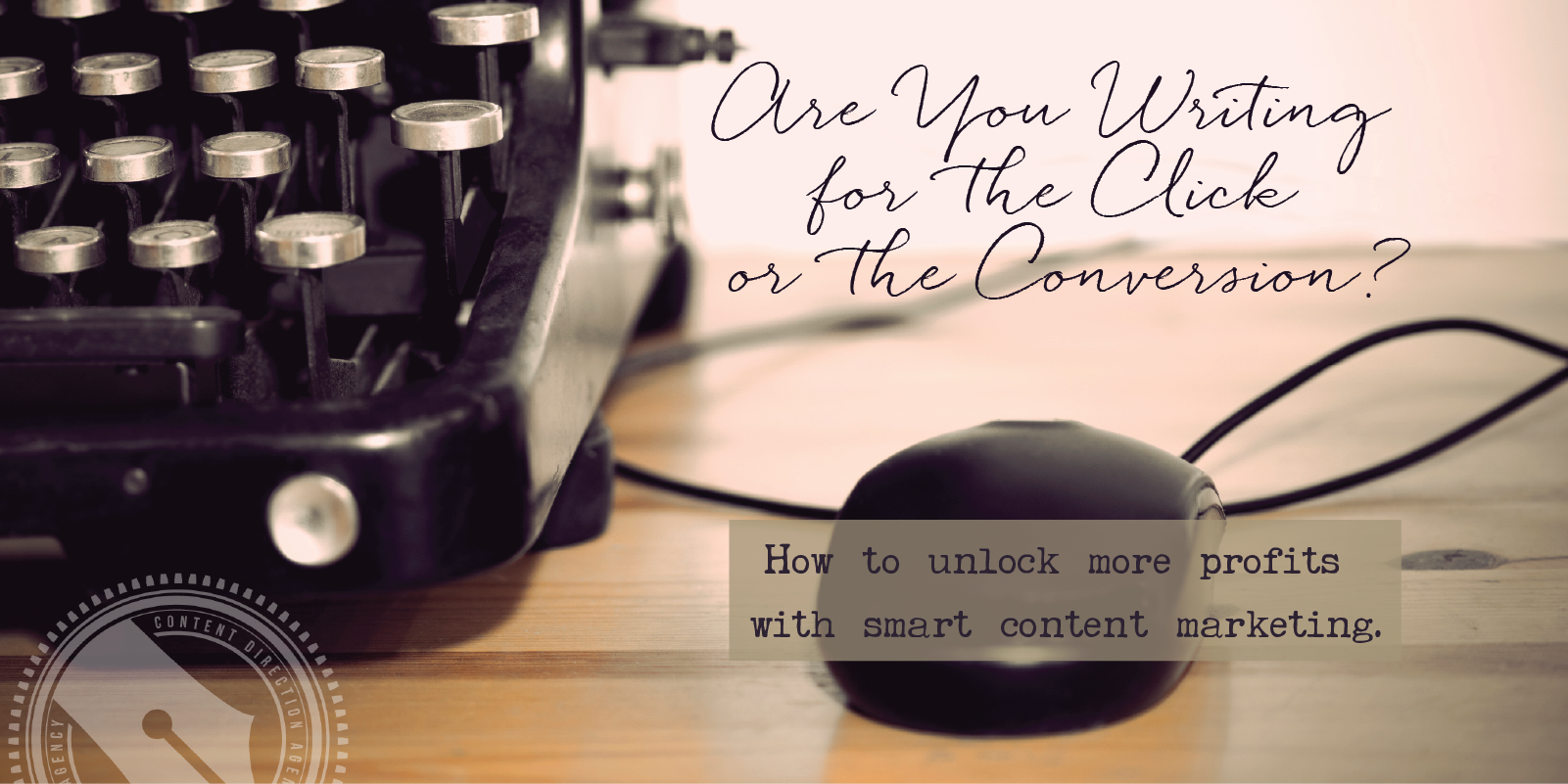I think there are two main kinds of blog posts (well, three, actually, but I’ll get to that later).
There are those you write for the click, and those you write for the conversion.
Writing for the click is all about getting people to come and look. Writing for the conversion is about getting them to stay.
When are you writing for the click?
In my first post in this series, I talked about the two different business models for blogging: blogging as a business (and selling advertising on your content) or blogging for your business (and using the content to sell a product or service).
When you’re blogging as a business, it’s all about the clicks. Buzzfeed is a perfect example of this. They’ve perfected the art of “clickbait” headlines that make it nearly impossible not to click through and read the article, and they churn out mass quantities of fluff content they hope will appeal to the most readers.
Because that’s how they make their money. The more visitors they get to their site, the more ads they can display, the more money they will make from their advertisers. It’s just a numbers game for them.
But your business model is different.
If you’re blogging to support your business, but all your posts are designed to be attention grabbers — all style with no substance — then you’re not going to see much in the way of conversions, that is sales. Moolah. Ka-ching.
In my Content Intelligence Agency , a student noted, “I’m seeing that I need to brainstorm way more Desire and Action posts. Almost all of mine are Attention or Interest.”
And she’s not alone.
I think this is because a lot of the blogging advice out there is about how to drive traffic — literally, how to drive more people to click on your site.
Now, let’s be clear here: This is important. It is important to get people to come to your site, click on your links, look at your blog.
Because, honestly, what the heck are you blogging for if not to draw in an audience? It’s not because you just loooooooove writing essays to yourself, I’m betting.
But writing for attention, writing for the click is only the first step in the process. You’ve got to have something to back it up if you want conversions as well.
When are you writing for conversion?
Writing for the conversion comes after — but it’s a step many people miss.
Because, frankly, it’s a lot harder.
When you’re writing for the click, you only have to engage people for a short time — long enough to get that coveted click. It doesn’t matter if they leave your page right away, right? Because you got the traffic. If they stay, hey that’s awesome. You got the click.
Writing for the conversion asks more. You have to engage the reader. You have to not only get them to click, then read, but then you have to persuade them to take an action.
That’s tricky.
Here’s my secret to writing for the conversion: Be insanely helpful and then offer something that’s even more insanely helpful.
To me, that’s kind of the easy way out. I know how to be insanely helpful.
There are people out there who are “conversion copywriters” and they study (like with math and stuff) exactly which words persuade us to take action. It’s the difference between “BUY NOW!” and “invest in yourself.” It’s heady stuff. And it’s super duper complicated.
Which is why, simple me, I stick to being insanely helpful.
But no matter how you slice it, you MUST become a conversion copywriter (at some level) if you want to be in business.
Because you MUST ask for more than the click with your content.
You have to do both.
At the beginning, I mentioned that there is a third kind of post: some are for the click, some are for the conversion — and some don’t get either.
As a business blogger, you can’t afford to waste time on content that doesn’t ask for the click or the conversion.
But as a business blogger, we also don’t have the luxury of only asking for the click. Buzzfeed can survive on traffic alone. You cannot.
As a business blogger, you have to do both: you must write for the click and the conversion.
That’s what’s at the heart of my AIDA formula for content that sells that I teach in CIA: You must grab their attention, hold it, and then persuade them to take an action.
In fact, the perfect Attention post (the first A in AIDA) grabs their attention, holds it long enough to get them to read the post, generates desire to know more, and then asks for the action in the form of an opt-in.
It goes through the entire AIDA sequence in an entire post.
Because we, as business bloggers, have to expect more from our content than just the click.


Great post Lacy!
Thank you!
“Be insanely helpful” – YES! So many entrepreneurs worry about giving away too much. It’s (almost) impossible to give away to much. Be of service!
AMEN! Haha. 😀
Do you think it’s possible to do both blogging biz models on one site/blog? or do they or should they be kept separate?
Lots of bloggers do both, Jennifer — that is, sell products AND advertising. I think it can be done well, you just have to be clear with EACH POST which revenue stream you’re driving and how it fits into your plans overall.
Do you think that seeing ads would be a turn-off to blog readers that are there for services or products? I’m a bit worried because I’m developing some premium programs, vs the last year where I’ve spent trying to grow a tribe for more of the advertising model.